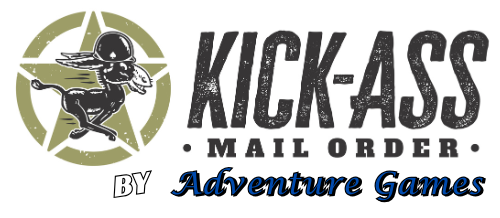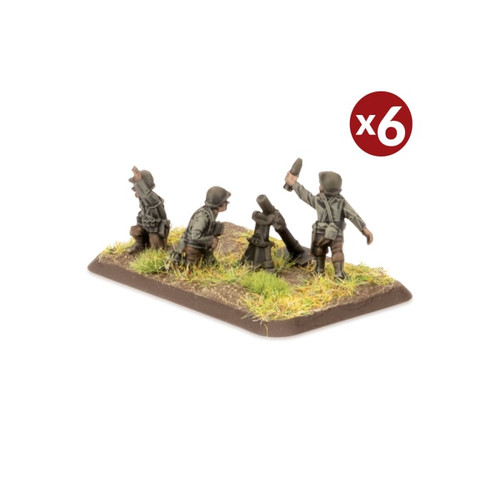Product Description
4.2" Chemical Mortar Platoon (US711) -OUT OF PRINT-
The 4.2" mortar was descended from the Stokes mortar of the WWI British Army. The First Gas Regiment of the US Army Chemical Warfare Service (CWS) obtained Stokes mortars from the British in 1918 and employed them along the western front. In July 1918, the Army contracted with American firms for the manufacture of these mortars.
After some experimentation with improving on the Stokes Mortar design by adding stabilising fins, increasing the propellent charge and rifling the barrel, moves were made to design a indigenous chemical mortar. By June 1924, one of the experimental barrels could send shells through the air on accurate, spin-stabilized flights of almost 2300 yards.
Previous mortar shell fuses had all-ways fuses to make certain that the tumbling shell would explode no matter whether it landed on its base, side or nose. Fuses of this type could not be used on a spinning shell since centrifugal force would activate the fuse and cause the shell to burst as it left the muzzle of the mortar. After considerable experimentation, engineers developed a safe, dependable fuse that could be set for impact or time.
Vanes were added to the inside of chemical shells to prevent the liquid fillings, such as mustard or phosgene, from surging around inside the shell, unbalancing it and causing it to tumble and yaw in flight.
Adoption of a rifled barrel meant the engineers had to redesign several components of the mortar, from baseplate to shell fuse.
To seal the bore against loss of explosion gases, and to force the shell to conform to the rifling an ingenious solution was devised. A driving mechanism at the base of the projectile consisted of two round plates, one of brass and one of steel. The brass disk was designed so that its edge could be forced outward by pressure. When the powder exploded, gas pressure rammed the steel plate up against the softer brass plate, forcing its edge out and into the grooves, sealing gases in and forcing the shell to spiral out of the barrel.
Because of the increased recoil of the new mortar an all steel baseplate was designed to replace wooden one of the original Stokes mortar. In 1928 the model M1 4.2" chemical mortar entered service.
During the next decade CWS engineers put considerable thought into improving the standard model. The two-legged support was strengthened; barrels were made specifically for the new model from seamless drawn-nickel steel tubing.
A spring shock absorber was placed on the barrel to prevent the force of recoil from breaking the connection between support and the barrel.
In Flames Of War
The Chemical mortars weren’t used during WWII for chemical warfare, but instead filled the role of heavy mortars, much like the Soviet and German 120mm Mortars, it was a role they excelled in.
In fact the 4.2” was lighter than the Soviet or German heavy mortars and could be easily transported by its crew (Light Gun special rule allows it to be man-handled 4”/10cm per turn instead of just 2”/5cm).
It can also fire smoke and is great at concealing your troops from the enemy by smoking the enemy positions. It has an excellent range of 48”/120cm and a FP 4+.
Note: This product is supplied unassembled and unpainted. Glue and paints not included.




















